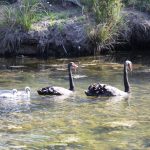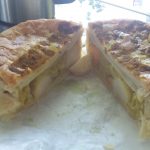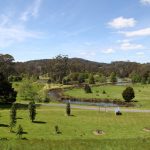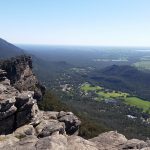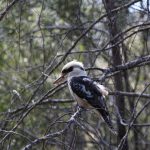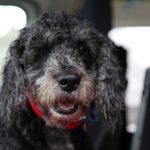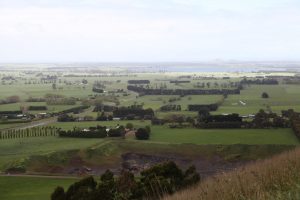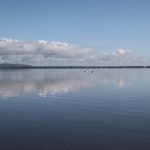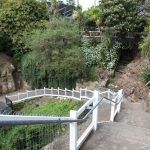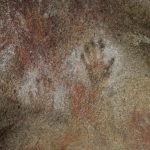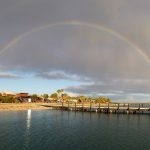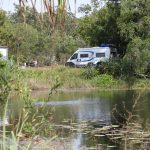Monkey Mia (pronounced ‘Myer’, as in the store) Conservation Area, is famous for its wild dolphins. They come into shore most mornings directly in front of the resort. We were a little unsure whether it would be worth the trip for us as we had Winston with us. However we were in for a surprise as the resort and beach are dog friendly and dogs can even come along and watch the dolphin experience with you (just not in the water with the dolphins!).

The dolphin feeding starts at 7.45am. There are five females which they feed: Surprise, Shock, Kiya, Piccolo and Puck. People are invited onto the beach and stand in the shallows while the rangers give a talk and the dolphins who have turned up swim around close by. Then volunteers come down with buckets of fish and people are picked to come and feed the dolphins. You’re not allowed to touch the dolphins.
There were crowds of people for the first feeding session but only about half as many for the second and third so stick around and there’s more chance of being picked after the first one. They did tend to pick children or people who stood out for wearing something silly though. I was standing directly in front of a volunteer and her bucket and stared her down. She still picked the two little girls either side of me until their mothers said they had already fed the dolphins and someone else should get a go. In the end she called me forward and my Monkey Mia experience was complete when I fed ‘Surprise’!
Facts what we learned:
*No-one knows for sure how Monkey Mia got its name. It could be because a colloquialism for sheep was ‘monkey’ or after a schooner called ‘Monkey’.
*A dolphin is considered old when it reaches its 40s.
*The dolphins are recognised by the scars on their fins.
*The swollen part of a dolphin’s head is called its ‘melon’ which led us to wonder whether you can twist a dolphin’s melon (reference for Happy Mondays fans).
There were several emus wandering round the resort. They’re not stupid and as soon as anyone drove away from their campsite in a car, they were straight over and into the campsite looking for food. Winston very sensibly decided these birds weren’t for chasing.
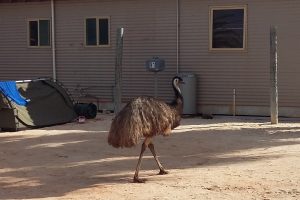
Top tip : There is only one place to stay at Monkey Mia – the RAC Monkey Mia Resort and from our experience, it would be a good idea to book well ahead if you want to camp. There weren’t that many van sites and it was completely booked out for the week apart from one spot for a night. The place must be on the must do list for backpackers and overseas tourists. If you want to be absolute oceanside, it costs $75 a night, the rest of the powered sites are $61. We got 10% discount as CMCA members and struck lucky with a normal site that had ocean views (Nr 47).

You also have to pay a fee for being in the Monkey Mia conservation area of $12 per adult per day. There is an $18 holiday pass which covers your stay at the resort.





